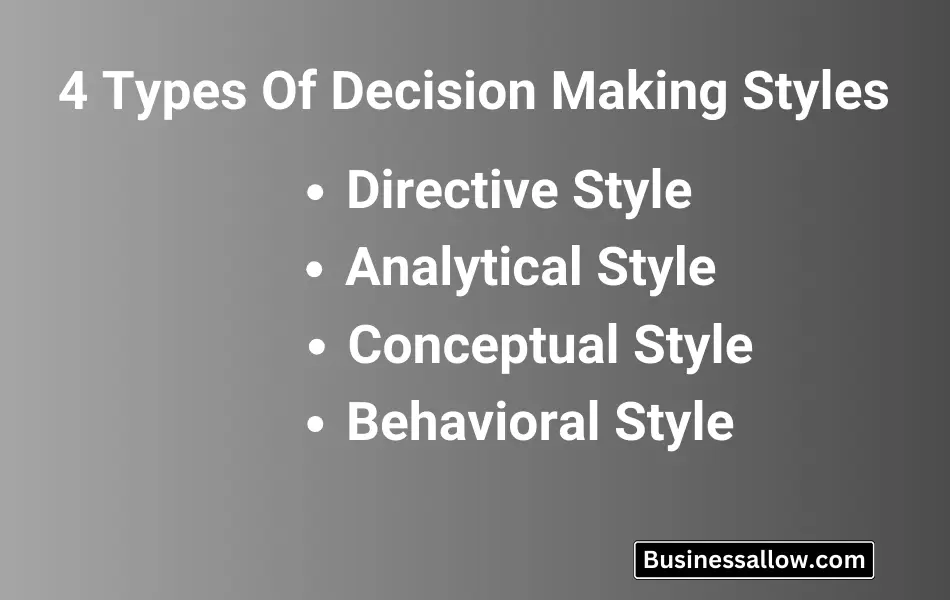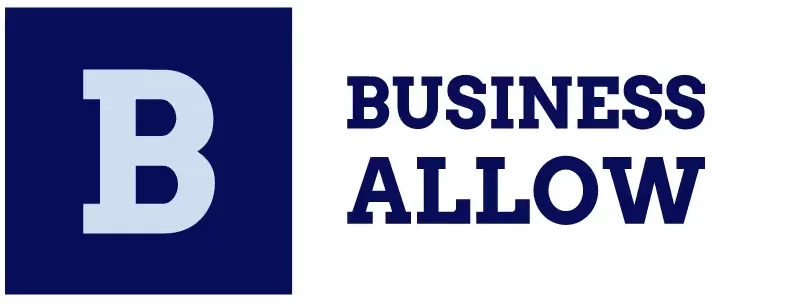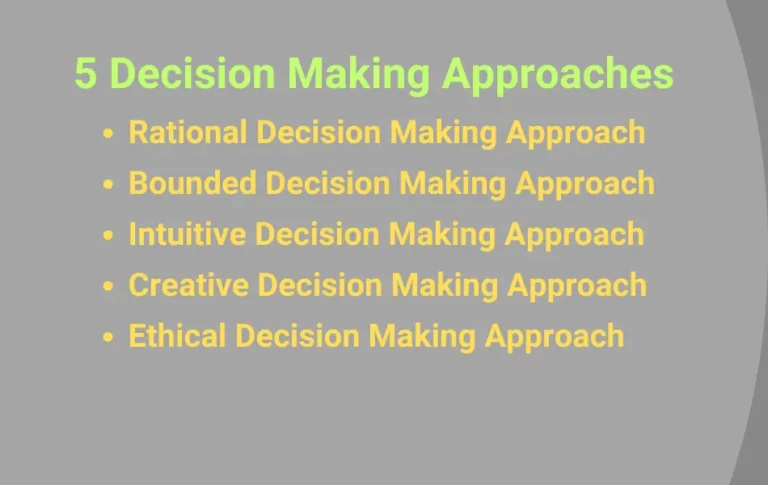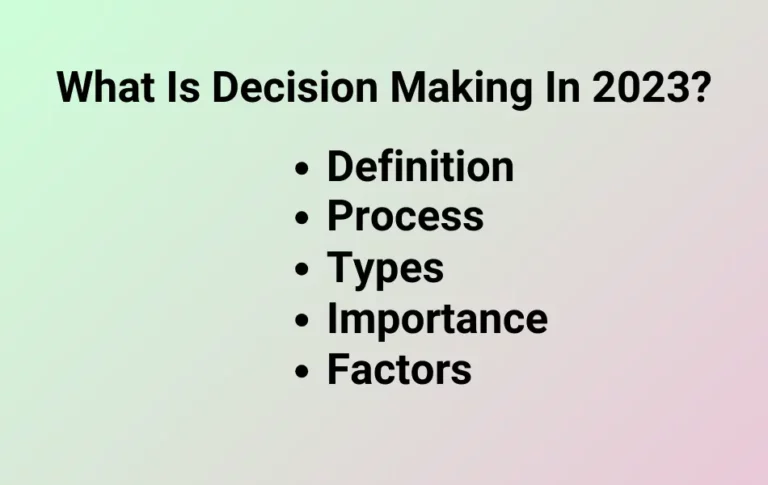Decision Making Styles: Definition, Types, Pros and Cons [Explained – 2024]

What Are Decision Making Styles?
Decision making styles refer to the various ways that managers and leaders use to make decisions and solve problems inside their organizations. These styles are influenced by the manager’s personality, leadership philosophy, and the context of the choice.
Here are four common decision making styles in management with examples;
Content Outline
4 Types of Decision Making Styles
1. Directive Style
The directive style, which is commonly linked with leadership, largely focuses on ordering acts to drive decision-making. Leaders that utilize the directive style give clear instructions on what, when, and how tasks should be accomplished, based on their knowledge, experience, and judgment. This technique limits the ability of third parties to provide comments. It is usually employed when the decision maker has more knowledge or expertise than the rest of the team
The directive style is often characterized by the following:
- Direct Control: The decision maker has full control over the issue or project and gives detailed directions on how to execute tasks.
- Low Ambiguity Tolerance: Directive leaders make decisions using tried-and-true strategies and practice, displaying only limited sensitivity to uncertainty or uncertain conditions.
- Efficiency and consistency are vital to directed decision-makers, who frequently choose the quickest and most reliable method to achieve their aims..
Pros and Cons of Using the Directive Style:
Pros:
1. Providing detailed instructions avoids uncertainty and gives a clear path to goal achievement.
2. Decisions can be made quickly due to decision-making independence.
3. This technique is effective in situations requiring quick decision-making.
4. A decision-maker with a directive style takes primary responsibility for the outcomes, assuring consistency and dependability.
Cons:
1. The directive style may stifle innovation by not allowing for alternate ideas or procedures from team members.
2. Because of the lack of collaborative decision making, this strategy may undermine team participation.
3. When one person controls the whole decision making, there is a risk that decisions will not fit with the greater vision of the team or organization.
Examples of Situations Where the Directive Style is Useful:
- Emergency Situations: In a crisis or emergency, the directive style can be efficient because it allows quick, effective decisions.
- Inexperienced teams: When managing an inexperienced team, a directive approach can provide the clear direction that the team needs to do their job efficiently.
- When Compliance is Critical: The directive approach is beneficial in compliance-tough areas like safe and healthy environments and design to make sure laws and regulations are followed, reducing potential errors.
- Military Operations: Given its hierarchical nature, the military often uses Directive Decision Making to ensure orders are promptly followed.
2. Analytical Style
Analytical decision making is a thorough and in-depth examination of relevant data and information. It is characterized by patience, careful analysis, and a systematic approach to decision-making. This decision-making approach seeks the most ideal alternative. Before making a conclusion, this technique often incorporates high degrees of logic, study, and evidence collection. This style is also distinguished by the prevalence of task-oriented behaviors and a high tolerance for ambiguity.
Pros and Cons of Using the Analytical Style:
Pros:
- Because of the detailed data analysis, decisions are highly accurate.
- Analytical decision-making helps to limit risks by allowing emerging issues to be addressed in advance.
- The decision making process is rigorous and exhaustive, often evaluating all possible alternatives before deciding.
Cons:
- Because of the thoroughness of the study and analysis, the procedure can be time-consuming.
- Over-involvement in data collection and analysis could result in delays and indecision.
- The reliance on data and proof may limit creative thinking and distinctive ideas.
Examples of Situations Where the Analytical Style is Useful:
- Market Research: Understanding market trends and customer behaviors to guide corporate plans requires an analytical decision making methodology.
- Medical Diagnosis: When diagnosing patients, healthcare professionals frequently employ analytical decision making by acquiring detailed medical histories and test data.
- Financial Planning and Investments: Analytical decision-makers excel in financial sectors, where informed judgments rely on market trends, economic indicators, and risk assessment.
- Project Planning: Extensive research and careful consideration of numerous aspects are required to plan and execute projects efficiently. This makes the analytical style useful in this situation.
Related: What are the 3 Decision Making Conditions?
3. Conceptual Style
The conceptual decision making styles involves viewing problems and situations from multiple perspectives and thinking long-term. This decision-making approach often considers a wide range of facts and possibilities, in search of creative and inventive solutions. This personality type is distinguished by the capacity to solve complex challenges by producing innovative ideas and ways. Conceptual decision-makers are also more tolerant of ambiguity and tend to prioritize people-related aspects of decisions.
Pros and Cons of Using the Conceptual Style:
Pros:
- Thinking outside the box encourages conceptual decision-making, which leads to new answers and tactics.
- This method enables for the consideration of different perspectives and alternatives, which generally results in holistic and well-rounded judgements.
- Conceptual decision-makers are frequently forward-thinkers, which makes this approach appropriate for long-term strategic planning.
Cons:
- The focus on the “big picture” might sometimes cause an overlooking of essential details necessary to implement the decision.
- A thorough examination of all options may result in a longer decision-making process.
- Decision-makers often overestimate the practicality and feasibility of innovative and creative solutions..
Examples of Situations Where the Conceptual Style is Useful:
- Strategic Planning: A conceptual approach aids in strategic planning, such as company innovation and future-oriented operations, by generating ideas and envisioning potential possibilities.
- Conflict Resolution: This style values considering different points of view and viewpoints, which can be useful when resolving disagreements or managing many teams.
- Product Development: Conceptual decision-making can assist in promoting creativity and generating new ideas in businesses that rely on innovation, such as R&D or technology.
- Community Planning and Development: In community development procedures, broad consideration of community interests and a vision-oriented approach are required, making conceptual decision-making useful.
4. Behavioral Style
The behavioral decision-making style emphasizes collaboration, participation, and consideration of the feelings and opinions of others. This method is used by decision-makers to create relationships and foster a positive team culture. They prioritize the human aspect of decision-making and examine how their actions will affect the people involved. This style is characterized by the following:
- Collaboration and Inclusion: Decision makers seek feedback and participation from others, valuing team members’ viewpoints and contributions.
- Empathy and Emotional Intelligence: The behavioral style promotes understanding and responding to the emotions, needs, and concerns of persons affected by a choice.
- Building Consensus: The decision-maker seeks to achieve consensus or general agreement among team members.
- People-focused: This behavioral style prioritizes the team’s well-being and satisfaction in order to build a positive work environment.
Pros and Cons of Using the Behavioral Style:
Pros:
- The emphasis on collaboration and inclusion creates a positive work atmosphere, which boosts team morale and engagement.
- The behavioral style allows for many perspectives and ideas to be explored, resulting in improved decision outcomes.
- When team members feel valued and included in decision-making, they are more likely to support and commit to the outcome.
- The behavioral style promotes strong ties and trust among team members, promoting efficient teamwork.
Cons:
- The behavioral style can involve extensive discussion and collaboration, resulting in a longer decision-making process.
- Obtaining consensus from various individuals can be challenging, and it may compromise the speed and efficiency of decision-making.
- Focusing on people and emotions might result in overlooking practical considerations or objective facts.
Examples of Situations Where the Behavioral Style is Useful:
- Team Building and Conflict Resolution: The behavioral style builds cohesive teams, solves problems, and promotes strong relationships among team members.
- Organizational Culture and Change Management: Decision-makers can use behavioral styles to consider the impact of their decisions on corporate culture and to deal with change effectively.
- Employee Feedback and Engagement: The behavioral style can effectively involve employees in decision-making processes, encourage their feedback, and improve their engagement.
- Diversity and Inclusion Initiatives: The behavioral style is important for diversity and inclusion programmes because it helps decision-makers to explore diverse views and create inclusivity.
It’s important to note that decision making approaches vary based on the nature of the decision and the context in which it is made.
Conclusion
In the ever-changing landscape of management, grasping the essence of decision making styles is essential. These styles paint a vibrant canvas of diverse approaches endowed with distinctive strengths. When you acknowledge your kindness and weave in insights from others, your journey as a leader becomes more dynamic and versatile. In today’s business world, where change is constant, the ability to manage diverse decision making styles is critical not only for success but also for nurturing growth.






